How to monetize your pet blog or website with affiliate marketing


If you have a passion for a pet blog and believe there’s no way you can monetize it, let us put this myth to rest.
In reality, there are several marketing tactics that can help you make money with your pet website (ads, sponsorships, etc.). However, if you want to start with a tried-and-true methodology that drives results, you should dip your toes into the affiliate marketing world.
In this article, we’ll break down everything about affiliate marketing and how you can leverage it to monetize your pet blog.
Let’s dive in.
What is affiliate marketing?
Affiliate marketing is the process by which you (the pet blogger) can earn a commission by using an affiliate link to promote pet products or services from pet retailers and advertisers.
When someone makes a purchase through your affiliate link, you get a specific commission percentage from the sale.
For example, if you promote a pet food bundle worth $200 (where the retailer specifies giving you a 20% commission), when Jane Doe buys the bundle, you receive $40.
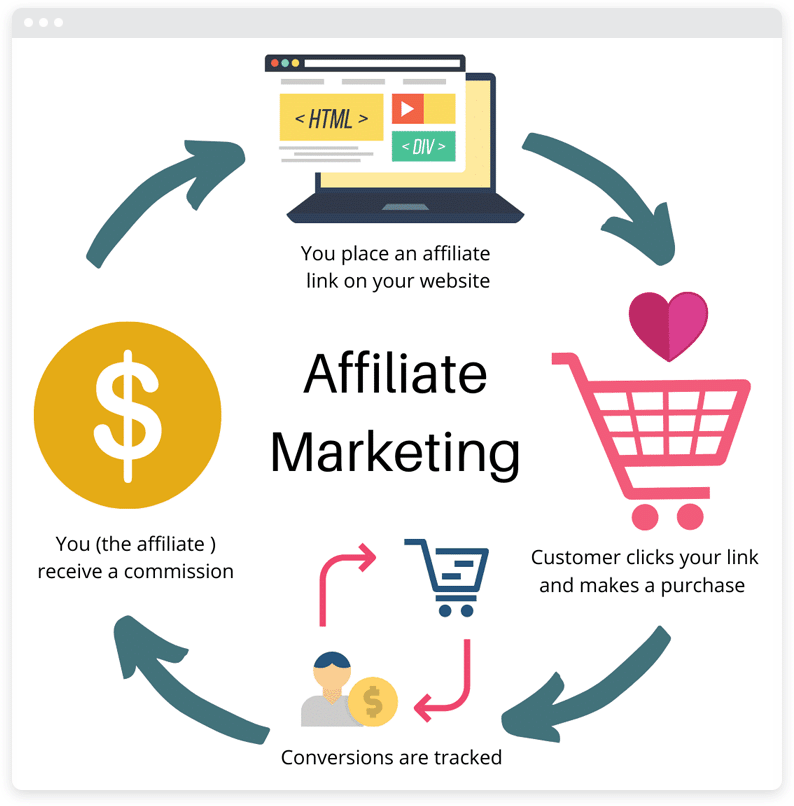
Affiliate marketing is a profitable way to monetize your blog, but to do so you must know the focal element of this specific marketing strategy: your audience.
To do this, one of the solutions is to integrate a customer 360 approach so that you can understand the interactions of leads and the preferences of your website visitors.
With this kind of accurate and personalized information, you can better understand not only your target audience, but it will also help you find the right kind of affiliate products to promote.
How to choose the right affiliate programs
Before diving head-first into any affiliate program you can find with a quick Google search, let’s discuss the factors you should consider before choosing any affiliate program for your pet website.
Factor #1: Relevance
The first step is to understand whether the affiliate program (or the products associated with the product or service) will resonate with your pet blog readers.
If the products aren’t relevant to them, they won’t buy the product. So, identify the needs of your website readers and only choose the products or services they’ll find useful for their pets.
For example, if your blog showcases heartwarming pet stories and adorable pet photography, consider partnering with frame stores that offer wholesale picture frames.
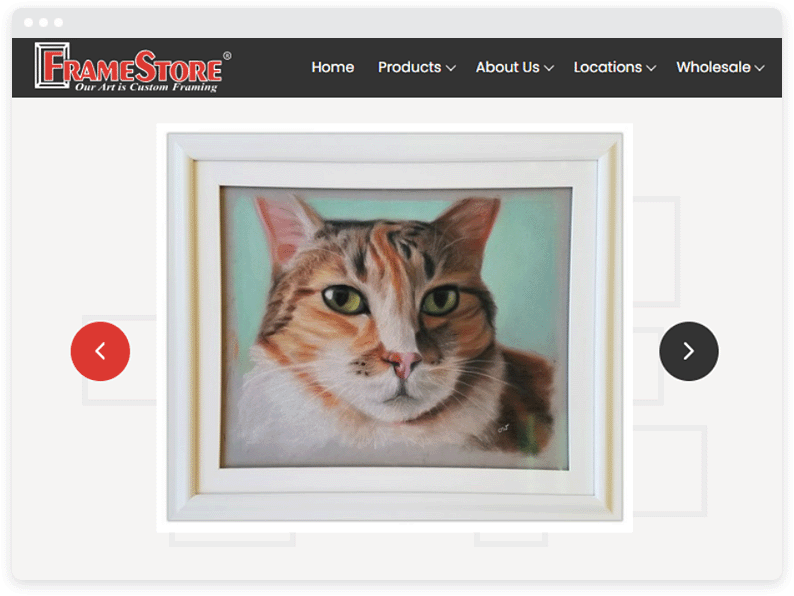
Factor #2: Commission rates
The higher the commission rate is, the more you can earn per referral. However, your success with the commission rate also depends on the product or services you choose.
If you become a referral partner for a premium pet product, that’s great. But you can also earn a good commission with lower commission rates, too. Lower price points don’t cause as much friction in the buyer’s journey.
In other words, lower commissions and higher volumes can pay out just as much as higher commissions on premium pet products like self-cleaning litter boxes.
Factor #3: Brand reputation
When you promote a shady product or brand, it impacts your credibility in the eyes of your readers. So, do a brand quality check before pursuing a specific pet referral program.
Pro tip: Read all the terms and conditions of the affiliate program before becoming the affiliate partner. This will prevent you from the major problems that may occur.
For example, if the affiliate program states that you can’t become a partner with another pet brand, you’ll need to reconsider the partnership.
Top affiliate programs in the pet industry
Here are three affiliate programs that you can consider to monetize your pet blog:
1. Innovet Pet
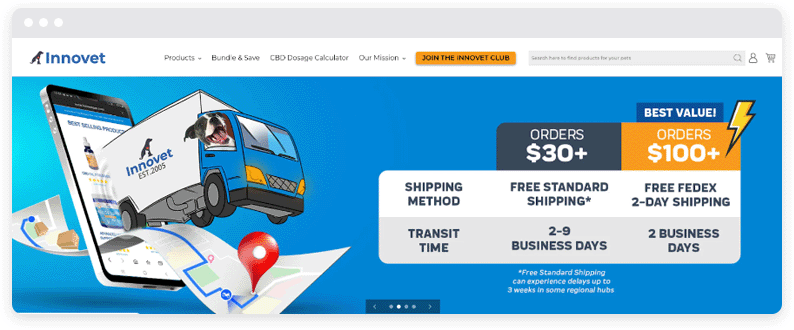
Innovet Pet’s affiliate program gives you a chance to earn a good commission of 20–40% per sale. What’s even better? They provide a cookie duration of 30 days, giving you ample time to earn profits.
In case you’re confused about which pet products you should promote from this brand, consider promoting their bestselling products — dog treats, shampoos, and supplements.
Commission rate: 20–40% per sale
Cookie duration: 30 days
2. Petco
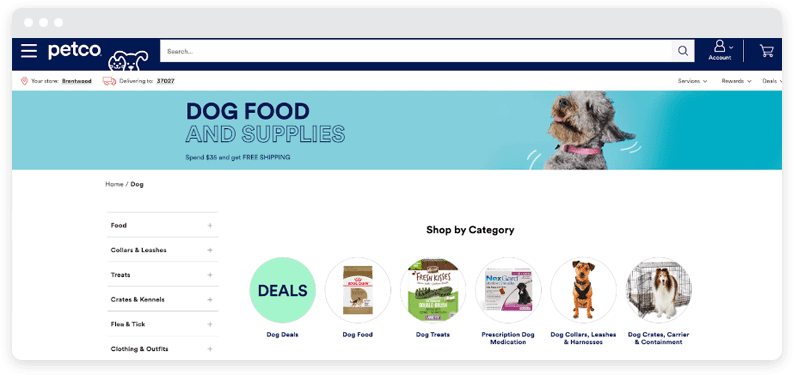
Petco, a household name in pet care and supplies, offers an opportunity for bloggers and website owners to earn by promoting its vast range of products.
Not only does Petco carry an impressive array of pet food and supplies, but they also provide numerous services to ensure our furry friends remain joyful and healthy.
The best part? Onboarding is a breeze. Whether you’re familiar with Impact Radius or it’s your first rendezvous, the platform offers an intuitive reporting interface. Plus, you get instant access to tracking links to promote PetCo promotions and products just in time for the holidays.
Commission rate: Up to 4%
Cookie duration: 7 days
3. Revival Animal Health
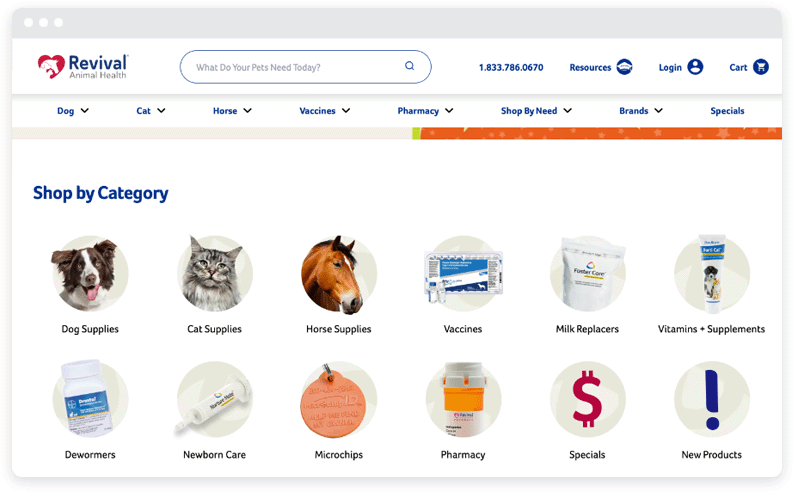
Revival Animal Health offers a generous 10% commission per sale with a longer cookie period of 45 days, the longest duration compared to other pet affiliate programs.
Even when this brand offers a lesser commission rate, the longer cookie period gives you a good amount of time to earn more profits. Additionally, the brand offers an affiliate manager to affiliates for guidance and support.
Commission rate: 10% per sale
Cookie duration: 45 days
7 Content strategies for effective affiliate promotion on your pet blog
So, you’ve partnered with a pet brand and want to promote their products. But the question is, how?
Here are seven strategies for effective affiliate promotion.
Strategy #1: Product reviews and comparisons
Reviews influence 88% of consumers in discovering a local business. That’s why you need to write detailed product reviews on your website about products or services.
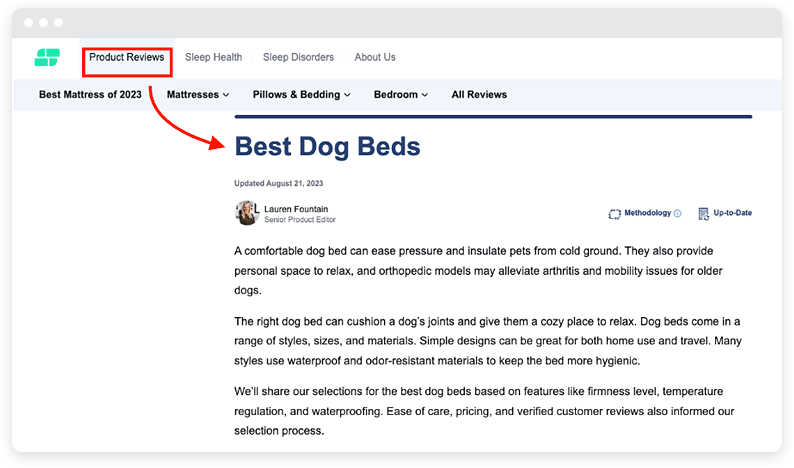
Or you can create video reviews on YouTube and post them on your blogs.
Here’s an example: choose a specific product from the brand you are promoting and share a detailed video review. To make it even more unique and professional, incorporate a voiceover to highlight the product’s benefits, features, pros, and cons. Finally, compare it with other brands selling similar products and show your readers why Brand A’s product is better than others to improve positive reviews.
Once you have completed the review, add the affiliate link for them to make the purchase in the video description box.
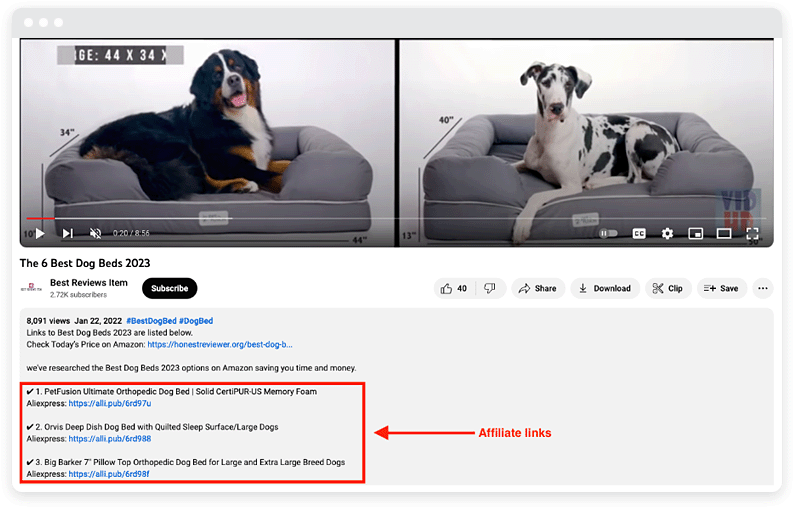
Strategy #2: How-to guides related to affiliate products
How-to guides are considered evergreen content, so whether your target audience reads the article one month or even a year down the line, you’ll earn a good commission from these articles.
Here’s an example of a how-to guide where the blogger shares with the reader how to choose the correct dog collar size.
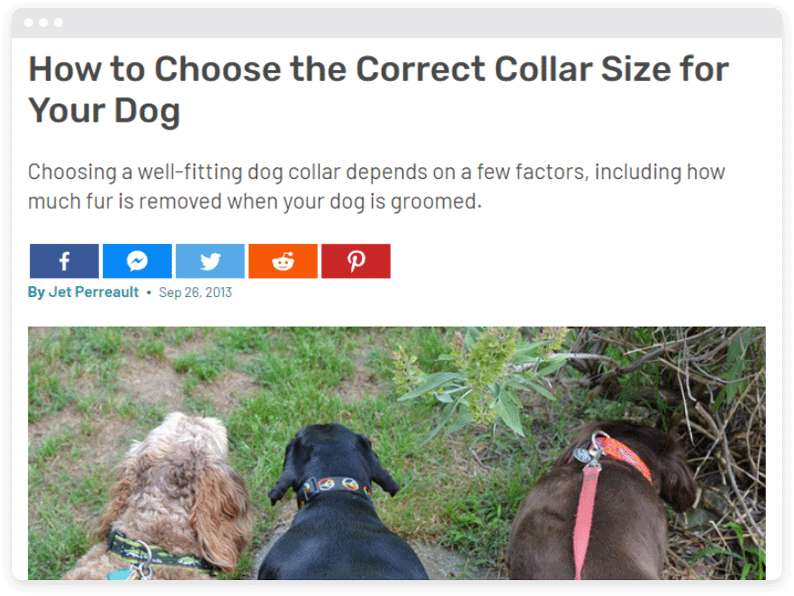
Strategy #3: Listicles
Listicles are a great way to add multiple affiliate links to your article. This is a great strategy when you have partnered with different brands and want to promote pet products by each brand in a single article.
For example, Business Insider wrote a blog post about the 19 best dog toys of 2023.
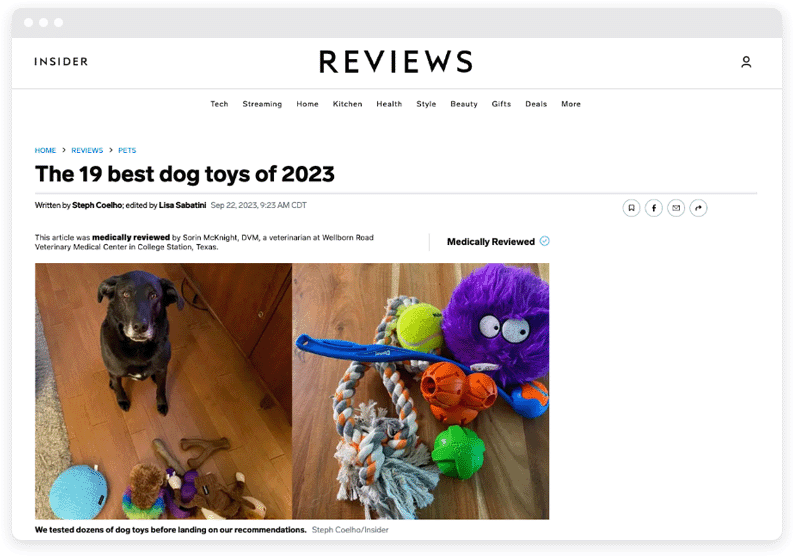
Strategy #4: Promoting your affiliate links organically
There are two ways that most pet bloggers use to promote affiliate links:
- Organic
- Paid
To focus on organic methods, you’ll leverage your blog, social media platforms, and your network or followers.
When you focus on paid methods, you’ll use ad campaigns to push your affiliate links to a larger audience. Although this strategy is lucrative, the organic method works well in the long run.
Here are a few ways to leverage organic affiliate promotion:
- Include the affiliate links in a resource guide and share them on your social media platforms.
- Conduct a webinar educating pet owners about a specific topic like medical issues and share the resource list of affiliate links with them.
- Leverage email marketing and send newsletters to your subscribers. In each newsletter, you can add a resource section with affiliate links.
Strategy #5: SEO strategies tailored for pet blogs
To widen the reach of your pet blog, you need to implement SEO strategies and best practices to improve your blog’s ranking on Google.
Here are a few ways you can avoid common SEO mistakes:
- Use keyword research tools such as Google Keyword Planner, Semrush, or Ahrefs to conduct keyword research. Find the keywords that are performing well in the pet niche. Pick keywords with low difficulty and decent search volume (at least 100 monthly searches). Or you can focus on long-tail keywords.
- Add primary keywords to blog headlines, title tags, and meta descriptions.
- Network with other pet bloggers or pet websites and write guest posts on their websites.
Strategy #6: Using social media platforms popular among pet enthusiasts
You don’t need to promote pet products solely on your pet blog. Here’s the thing: to drive more affiliate traffic, you need to be present on social media platforms and not just on your pet website.
Instagram and Pinterest are the two most recommended platforms that pet bloggers leverage.
Start by creating pet content and tag the products you have used for your pets. For example, in your Instagram Story, add the affiliate link for the food brand you’re feeding your pet.
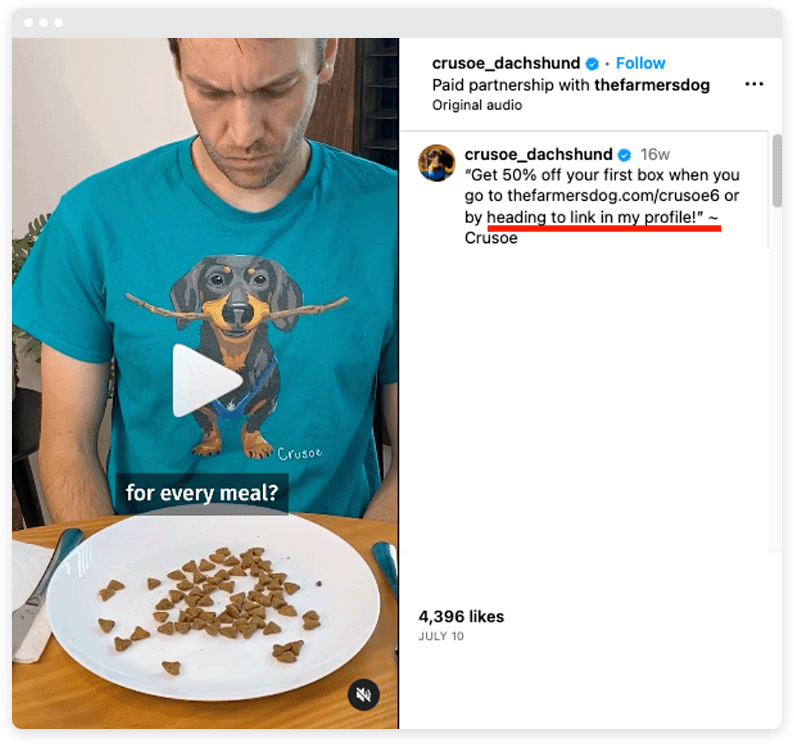
Or you can create compelling Idea Pins on Pinterest with the link to your pet blog in your Pinterest bio.
The key is to also engage with your audience through comments, Instagram Stories, and DMs.
Strategy #7: Avoid common affiliate marketing pitfalls
When you don’t disclose to your audience about affiliate promotions with your articles, it breaks their trust and will further lead to questioning your blog’s credibility.
So, always add a disclaimer about affiliate links in your blog posts to inform readers about the promotion.
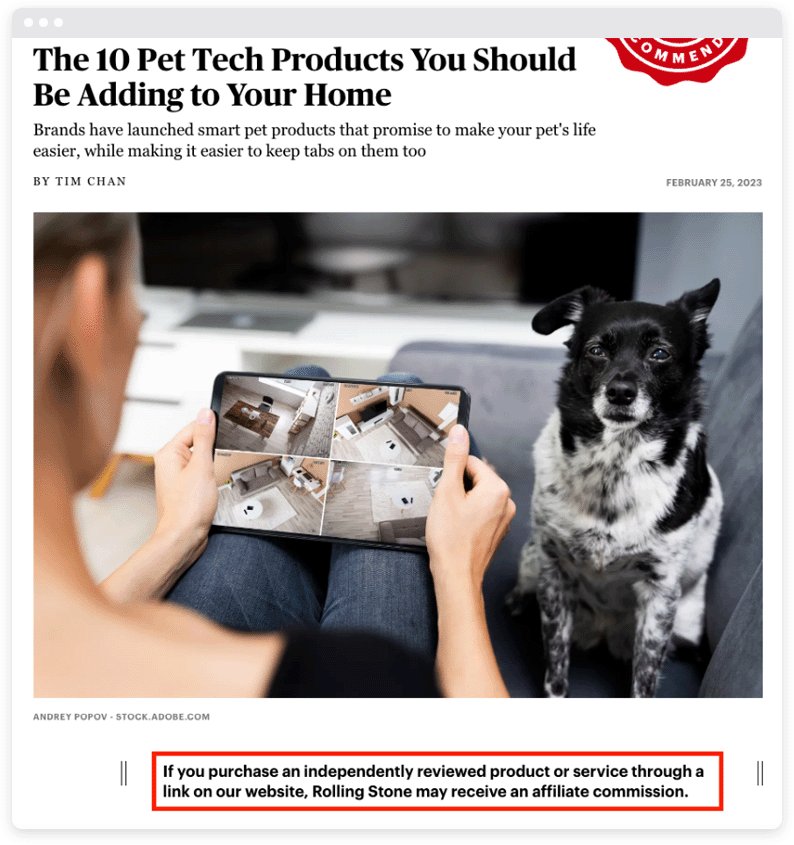
Finally, you must balance promotional content with genuine, valuable information.
The goal is to educate your target audience and not create content only to promote your affiliate links.
For example, an article on the cost of pet insurance by Pumpkin Care is the standard example of how you should educate your target audience while promoting the product links.
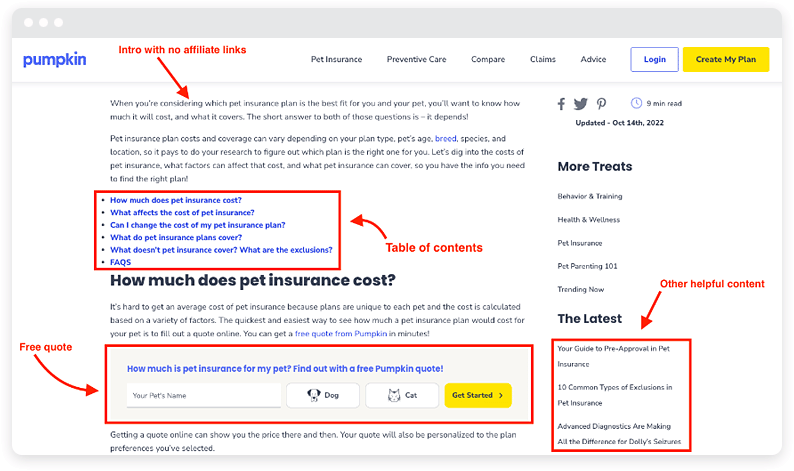
Test, experiment, and profit
Affiliate marketing may seem like a not-so-profitable monetization tactic to you initially. But once you understand the right ways to promote brands, it can yield you generous profits.
While we have shared a few strategies for affiliate promotions, there’s no one-size-fits-all for pet websites. Experiment with new strategies and find out which strategies work best for your pet blog.
Here’s to turning your pet blog into a money-making machine. Good luck!
About the author
Guillaume is a digital marketer focused on handling the outreach strategy at uSERP and content management at Wordable. Outside of work, he enjoys his expat life in sunny Mexico, reading books, wandering around and catching the latest shows on TV.
